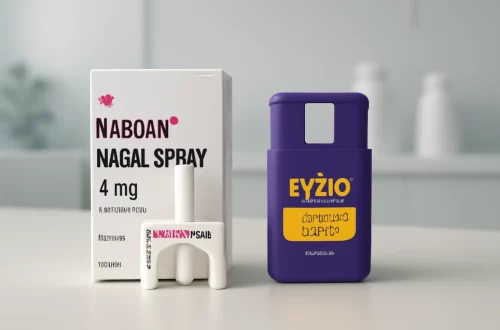
Freckles vs Sunspots: Understanding the Key Differences and Care Tips
Freckles and sunspots are two skin phenomena that often perplex many individuals, especially when it comes to their causes, characteristics, and care methods. Both are related to skin pigmentation and can appear on various parts of the body, particularly those exposed to the sun. However, they are fundamentally different in their origins, appearances, and the treatment options available to manage them. Understanding these differences is essential not only for the sake of skincare but also for maintaining overall skin health.
Freckles are small, flat, brownish spots that typically appear on sun-exposed areas like the face, arms, and shoulders. They are more common in individuals with lighter skin tones and are often more pronounced during the summer months due to increased sun exposure. Sunspots, or solar lentigines, on the other hand, are larger, irregularly shaped patches that develop as a result of long-term sun exposure. They usually appear on areas of the skin that have been frequently exposed to sunlight, such as the face, hands, and back.
While both freckles and sunspots can be aesthetically displeasing to some, they serve as important reminders of the skin’s response to UV radiation. Understanding how to care for your skin, whether you have freckles or sunspots, is crucial for maintaining a healthy complexion. In this article, we will delve deeper into the characteristics of each, as well as share effective care tips to help manage and protect your skin.
Characteristics of Freckles
Freckles are small, flat spots that vary in color from light tan to dark brown. They are typically less than a quarter of an inch in diameter and are most commonly found on the face, shoulders, and arms. Freckles are caused by an increase in melanin production in the skin, which is triggered by exposure to sunlight. This is why you may notice that your freckles become more pronounced during the summer months.
Genetics play a significant role in the development of freckles. If your parents or grandparents had freckles, there’s a good chance you might have them as well. People with fair skin and red or blonde hair are particularly prone to developing freckles.
Freckles are generally harmless and do not pose any health risks. They are a common skin feature, especially among children and young adults. However, as people age, their skin may change, and existing freckles can darken or new spots may develop. This can sometimes cause confusion when distinguishing between freckles and other pigmented lesions, such as sunspots or moles.
The good news is that freckles can be easily managed with proper skincare. Some individuals choose to embrace their freckles as a unique part of their appearance, while others may opt for treatments to lighten or reduce their prominence. Sun protection is crucial for both freckle management and overall skin health. Wearing sunscreen daily, even on cloudy days, can help prevent new freckles from forming and existing ones from darkening.
Understanding Sunspots
Sunspots, also known as solar lentigines or age spots, differ significantly from freckles in their appearance and formation. These spots are typically larger and more irregularly shaped than freckles, often appearing as dark brown or black patches on sun-exposed areas of the skin. Sunspots are a result of prolonged sun exposure and are more common in older adults, although younger people who spend considerable time in the sun can also develop them.
The primary cause of sunspots is the skin’s response to ultraviolet (UV) radiation. Over time, the skin accumulates damage from sun exposure, leading to an increase in melanin production, which manifests as these darker patches. Unlike freckles, which can fade with reduced sun exposure, sunspots tend to be more persistent and may require treatment to lighten or remove them.
Sunspots are often mistaken for other skin conditions, including melanoma, a serious form of skin cancer. Therefore, it is crucial to monitor any changes in the size, shape, or color of these spots. If you notice any suspicious changes, consulting a dermatologist is essential for a proper evaluation.
Prevention is key when it comes to sunspots. Regular application of broad-spectrum sunscreen can help minimize the risk of developing new sunspots. Additionally, incorporating protective clothing and seeking shade during peak sunlight hours can further enhance your skin’s defense against UV damage. For those looking to reduce the appearance of existing sunspots, treatments such as chemical peels, laser therapy, or topical creams containing hydroquinone may be effective options.
Effective Skincare Tips for Freckles and Sunspots
Caring for your skin, whether you have freckles or sunspots, is vital for maintaining a healthy complexion. Here are some effective skincare tips to help manage both conditions:
1. **Sun Protection**: The most crucial step in preventing both freckles and sunspots is to wear sunscreen daily. Choose a broad-spectrum sunscreen with an SPF of at least 30, and reapply it every two hours, especially when outdoors. Don’t forget to apply it on cloudy days, as UV rays can penetrate through clouds.
2. **Gentle Cleansing**: Use a mild cleanser that won’t irritate your skin. Harsh scrubs can exacerbate pigmentation issues, so opt for gentle products that cleanse without stripping the skin of its natural oils.
3. **Moisturization**: Keeping your skin hydrated is essential. Use a moisturizer suitable for your skin type to maintain its barrier function and prevent dryness, which can make pigmentation more noticeable.
4. **Topical Treatments**: For those looking to lighten freckles or sunspots, consider products containing vitamin C, retinoids, or niacinamide. These ingredients can help reduce pigmentation and promote an even skin tone.
5. **Professional Treatments**: If you have persistent sunspots or wish to address your freckles more aggressively, consult a dermatologist. Treatments such as laser therapy, microdermabrasion, or chemical peels can be effective in reducing pigmentation.
Remember, maintaining healthy skin goes beyond just managing pigmentation issues. A balanced diet, adequate hydration, and a consistent skincare routine will all contribute to your skin’s overall health and appearance.
In conclusion, while freckles and sunspots may share some similarities, they are distinct skin conditions that require different approaches for care and management. By understanding their characteristics and implementing effective skincare strategies, you can maintain a healthy and beautiful complexion.
**Disclaimer**: This article is for informational purposes only and does not constitute medical advice. For any health-related concerns, please consult a qualified healthcare professional.




